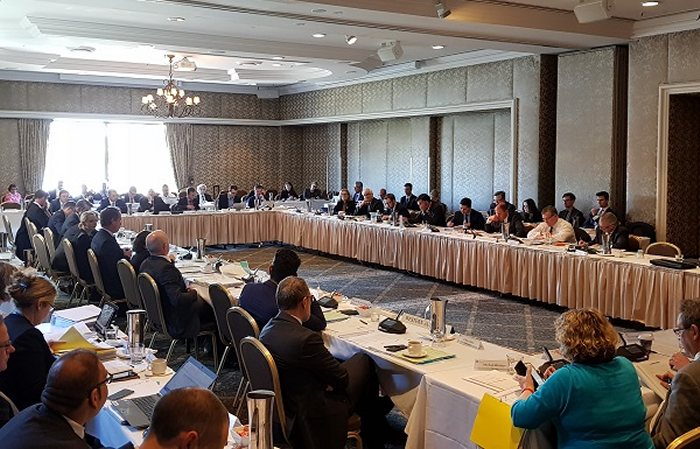
Clean Energy Target causes friction at COAG meeting
As expected, Friday’s COAG Energy Council meeting saw all but one of the Finkel Review recommendations approved – the Clean Energy Target (CET).
Among the Finkel Review report recommendations that were given a tick at the meeting:
- A new generator reliability obligation requiring to guarantee a minimum level of dispatchable capacity.
- Energy security obligations to ensure necessary frequency control, ancillary services and inertia.
- Large generators being required to give a minimum three years notice before shuttering facilities.
- An Energy Security Board to be established to oversee the security and reliability of the National Electricity Market.
The Energy Council also agreed to ensure greater transparency on price and availability of long-term electricity contracts for large consumers is provided. Additionally, Australians will have more real-time control over their energy consumption data to support consumer choice, rewards for reducing electricity demand when needed and governments provided greater visibility of electricity prices and factors that affect their movement.
Also discussed was the issue of gas availability and prices, and the implementation of the Australian Domestic Gas Security Mechanism. The ADGSM will give the Commonwealth the power to intervene in the market and ensure adequate gas supply is available for domestic consumption – but there is some doubt as to whether it will be effective.
For more detail of what was agreed upon and discussed, a meeting communique can be viewed here (PDF).
Federal Energy Minister Josh Frydenberg seemed pleased by the outcomes judging by a release from his office:
“The COAG Energy Council has today agreed to a significant set of reforms which will deliver a more affordable and reliable electricity system as we transition to a lower emissions future,” it stated.
Clean Energy Target – Here We Go Again
Whether it’s a renewable energy target or a clean energy target, those three words seem to trigger an anaphylactic-type reaction among some in the Coalition, enough to dash any hopes of smooth sailing and rapid consensus.
Without the Clean Energy Target recommended by Chief Scientist Dr. Alan Finkel as part of the agreed upon reforms, not all who were present at the meeting shared Minister Frydenberg’s degree of optimism.
The Clean Energy Council said the CET is the “missing piece of the puzzle” that would provide certainty for new investment required to put downwards pressure on electricity prices and ensure energy security in Australia.
“.. the Finkel Review recommendations need to be implemented as a whole package to ensure they operate as a coherent, strong and enduring energy strategy,” said CEC Chief Executive Kane Thornton.
In another article, Mr. Thornton said that without consensus, national energy policy could continue being “the strange and frustrating rollercoaster ride” that Australia has experienced over the past decade.
Victoria’s Minister for Energy, Environment and Climate Change, Lily D’Ambrosio, said there was paralysis in the Liberal party.
“If Malcolm Turnbull was genuinely concerned about rising power prices he would immediately endorse a clean energy target and cap the unsustainable level of gas exports that are driving up prices – this would give businesses, industry and consumers the certainty they need,” Minister D’Ambrosio stated.
A day prior to the meeting, Queensland Energy Minister Bailey said a Clean Energy Target was critical and accused Minister Frydenberg of keeping the most important recommendation of the Finkel Review in the “too hard basket”.
“The Finkel Review modelling clearly showed a CET would deliver lower electricity prices, more investment and lower emissions compared to a business as usual approach,” he said.
As forewarned earlier last week, some states aren’t going hang around and wait for the Federal Government to give their tick of approval to the Clean Energy Target; as it may never happen.
South Australia, Victoria, Queensland and the ACT have joined forces and directed the Australian Energy Market Commission (AEMC) to work with the Australian Energy Market Operator (AEMO) to draft options to implement a Clean Energy Target – immediately.
“There is now broad support for a CET from industry, business, climate groups and State Governments – that is a very strong coalition all calling for a market mechanism like the CET to drive down power prices,” said South Australia’s Treasurer, Tom Koutsantonis.
Modelling undertaken for the Finkel Review indicates a small difference in electricity prices between the CET and Emissions Intensity Scheme (EIS) scenarios, but a significantly worse pricing outcome for consumers under a business-as-usual approach.
Under the CET, rooftop solar power systems would make up 11% of the National Electricity Market (NEM) energy mix in 2050, a little less than under a business-as-usual or emissions intensity scheme (12% each). However, non-rooftop solar PV would be higher – around 35% – compared to 25% in a business-as-usual scenario and 32% under an EIS.
Given what’s happening at a federal level, it still seems the best hope many Australians have in the forseeable future for reducing their electricity costs is installing solar panels and implementing energy efficiency strategies.

 RSS - Posts
RSS - Posts



Speak Your Mind